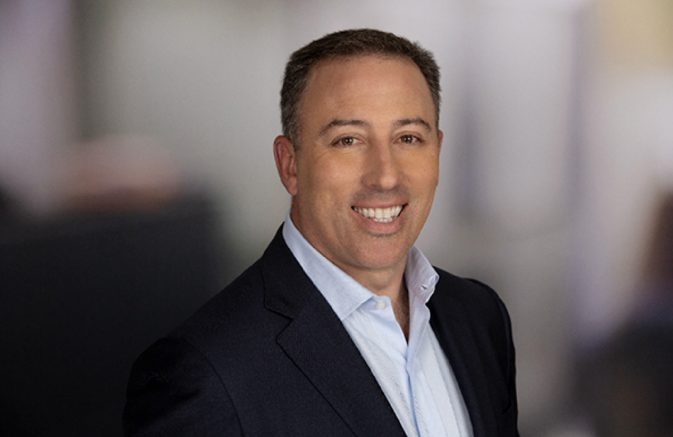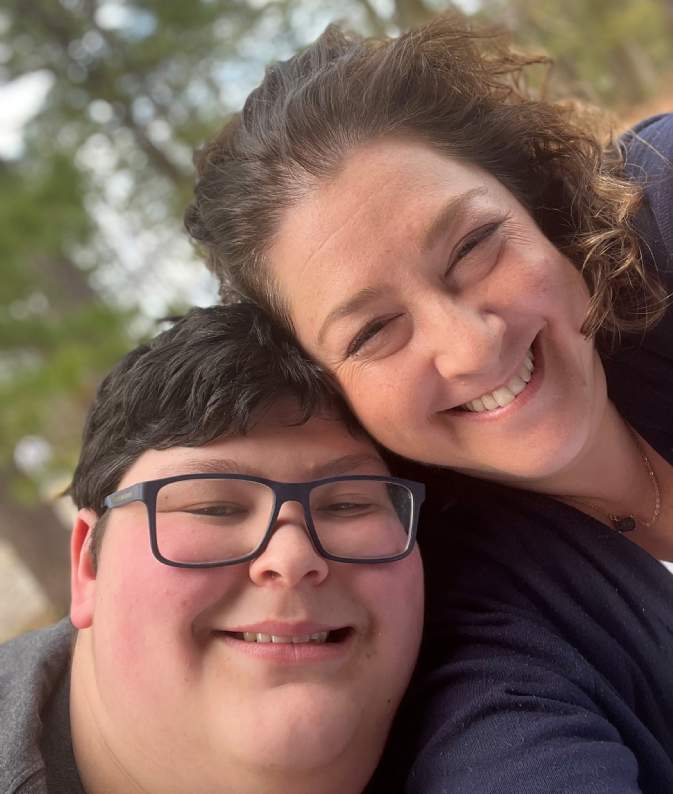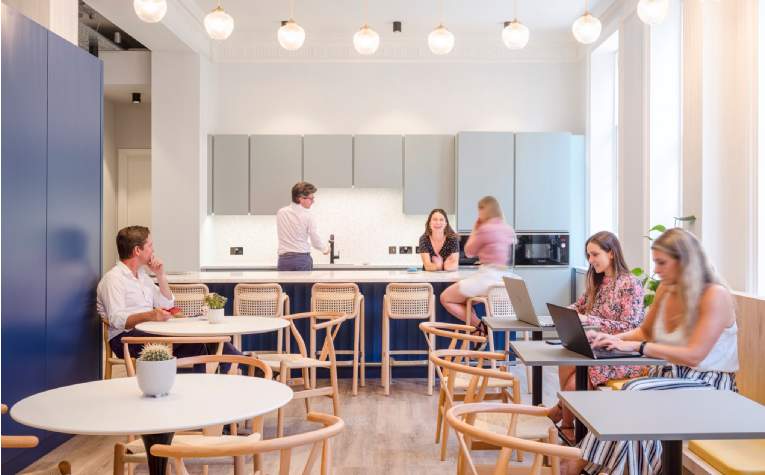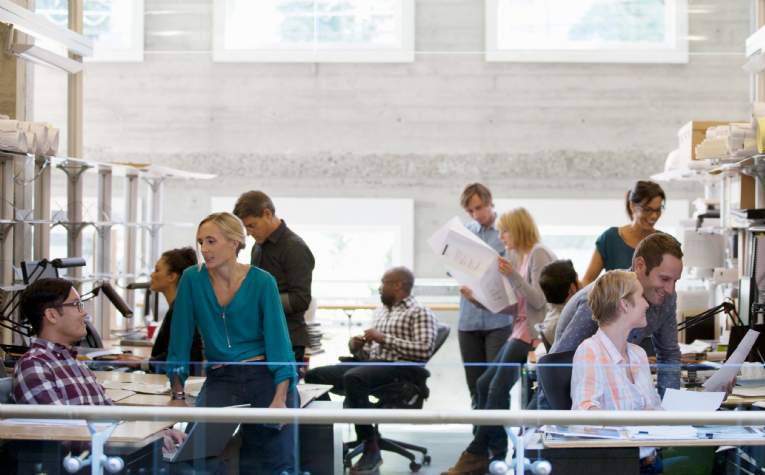When it comes to the process of building neuroinclusive workplaces, Benay Josselson knows there’s no single path forward. An expert in people management, organizational effectiveness, communications and engagement, she has worked with internal and external clients committed to people-centric workplace development. In our latest “Three Questions” spotlight, we speak to Benay about professional and personal challenges she has experienced, as well as why fostering environments of acceptance and inclusivity is important to companies, teams, and individuals alike.
Q. Your four-part “Neurodiversity in the Workplace” series, co-authored with Tonya Williams and Allison Hochberg, is a significant contribution to the timely and ongoing discussion of how companies, teams, and coworkers foster more inclusive workplaces. What new perspectives or practical recommendations do you want your audience to gain from reading the series?
BLJ: DEI in the workplace is such a broad umbrella topic. Companies spend a lot of time on policy and education as it relates to race, gender and the like, but they must go beyond that when building inclusive workspaces for purposes of neurodiversity. The series is a multi-faceted exploration of how companies can do this.
It is important to keep in mind that there is no single path forward, but the more people who think through these issues to participate in the process of building neuroinclusive workspaces, the better.
Executive leadership and decision-makers; administrative and operations and facilities professionals; disability advocates; neurodivergent and neurotypical individuals; and anyone seeking greater insight on an enormously important topic that impacts all people. Everyone has something to gain from reading it.
In the series, we address four key aspects of a very complex conversation: why companies need to address neurodiversity in their workplace; strategic planning and laying the foundation for change; design considerations in the physical spaces where employees work; and the change management process. While each could be read on its own, the purpose is to approach the conversation holistically while asking difficult questions. What are the positive (and negative) features of a workplace that enable (or prevent) employees from doing their best work? How can employees be better supported through more than policy, but design and behavioral changes? How do companies build empathy and understanding as part of this process? Getting as many people as possible to grapple with these questions is an incredible step forward.
A big kudos to Tonya and Alli for lending their subject matter expertise to this series and for being such incredible partners to our colleagues and clients. They have really gone above and beyond in taking this series from concept to actionable recommendations.
Q. Colleagues often describe your leadership style as empathetic, honest and transparent, and that you’re a mentor who helps foster new skills and success in others. Tell us about a time in your career when you’ve been challenged and how you navigated it.
BLJ: That is very humbling, because I certainly value those characteristics in my colleagues. In 2020, I experienced situations or circumstances that were, professionally and personally, the most challenging of my career. For perspective, Savills closed on its acquisition of Macro Consultants in early March, on the same day the WHO declared a global health emergency. All of the careful planning we had done for what we recognized would feel like an overwhelming change for our team was out the window, and we were navigating an added emotional layer relating to COVID. By June 2020, there was intense social unrest across the country, and economic turbulence was impacting all businesses, especially commercial real estate. Decision-making and leadership on issues like business continuity, employee morale, diversity and social justice, health and mental well-being was all-consuming, and there was no playbook.
I remember thinking, how do you provide physical and emotional comfort at a time when it was significantly uncomfortable for everyone? There were so many questions to answer. Stress levels were incredibly high, people were burnt out, and we didn’t know for how long. You never really know what’s going on in other people’s lives—that is, until you’re on video, can see inside their homes, with partners or children or pets walking by, etc. Regardless of where you were, no matter your level of seniority or role, you were exposed to people’s lives in a way that you never had before.
From the beginning we put an emphasis on our people being seen and heard, placing a high value on culture and connectivity. We recognized early on that people needed to “refill” their tanks, and how to do that while working productively and meaningfully was not one-size-fits-all. We focused on “meeting people where they were,” individualized and somewhat grassroots. Making sure folks had opportunities to meet 1:1 and in small groups, with unscheduled times for managers to check in to ask team members how they’re doing. Bringing joy and manifesting connection through happy hours, trivia contests, and other virtual engagement activities. With everyone working from home, employees needed a block of time to get up, walk around their block, disconnect briefly. We needed our leaders to set an example by doing this themselves. And our HR team – they went into overdrive. I’m still floored by the creativity, empathy and support that ran in all different directions.
For me, all of this was happening while I was handling COVID as a single parent at home. It was lonely and scary. Being a person people were coming to for clarity on so many items for so long, and having to project confidence all throughout the process, was something I had never imagined nor dealt with. The oxygen mask metaphor—help yourself before others—took on new meaning. It was very hard to make sure I was addressing my own needs so that I could take care of others. But I wanted to set a good example—for my colleagues, my sons, my friends. It was challenging to be fully present in the different aspects of my life with so much happening. But vulnerability is as universal for humans as resiliency. It was important for everyone to know we were all in it together. My children were in and out of my zooms, and I blocked a walk out on my calendar each day. I did not hesitate if I needed to step away to facilitate remote school issues. I spoke with friends in HR at other companies about how they were navigating things. I commiserated with friends. So that period was the most challenging of my career, but I can also flip it around and look at it as the most enlightening. I learned a lot about myself and the way I want to show up at work—and I carry those things through today.
Q. As a parent of a neurodiverse teenager, active community member, and vocal advocate for people with disabilities, what resources (people, communities, support networks, books/podcasts/media) would you recommend to those who seek more information, support, or counseling?
BLJ: There is always room to be more educated. Learning is key to understanding. And for each of us, there will always be a lot to learn. This is not just for professional reasons, but for personal reasons. I say this because we all have someone we love who is neurodiverse. We all know someone who is experiencing the world differently. But can we relate to their unique experiences? That answer isn’t straightforward, because some of us are comfortable and able to speak about it while others are not. The same is true for neurodiverse individuals.
Society, I think, is changing for the better as more and more people become open-minded about neurodivergence and how it impacts people. There are certain resources I’ve found especially helpful in reframing the perception of neurodiversity—in schools, in the workplace, in society. For example, Integrate Advisors focuses on helping organizations identify, recruit and retain professionals on the autism spectrum. They are an incredible source of information and education for employers and candidates alike. Two books that I’ve read recently that hit on this are Unmasking Autism by Devon Price and Neurotribes: The Legacy of Autism and the Future of Neurodiversity by Steve Silberman. Both books are informative in different ways. I also find myself routinely learning from neurodiverse creators on LinkedIn, TikTok and Instagram. A few of my favorites on LinkedIn are Nate Shalev and Tristan Lavender. On TikTok, I like Cory Singer and Paigelayle. I will also include a shameless plug for my Autistic 16-year-old son, who blogs regularly about his experiences and observations at www.rafijosselson.com, and does a lot of public speaking. He is my original and best teacher.
Anecdotally, I’ve noticed neurodivergent individuals self-advocating in the workplace more often than in years past, saying (and receiving) what they need to be successful, and sharing their authentic self. The environments they’re working in or learning in are becoming increasingly more supportive. These changes are not happening overnight, of course, and they come on the heels of this happening in school settings. Rafi advocates for what he needs at school respectfully, with confidence and a level of self-awareness that certainly serves him well. In 10 years, I expect he will advocate for himself as a professional in the same way. By then, there will be countless more who understand who they are in terms of their own or others’ neurodivergence and capabilities. It makes a huge difference in the strength of individual relationships when people are comfortable being themselves and valued for who they are.
.png)


.jpg)

.jpg)
.jpg)

.jpg)
.png)
.png)
(1).jpg)
